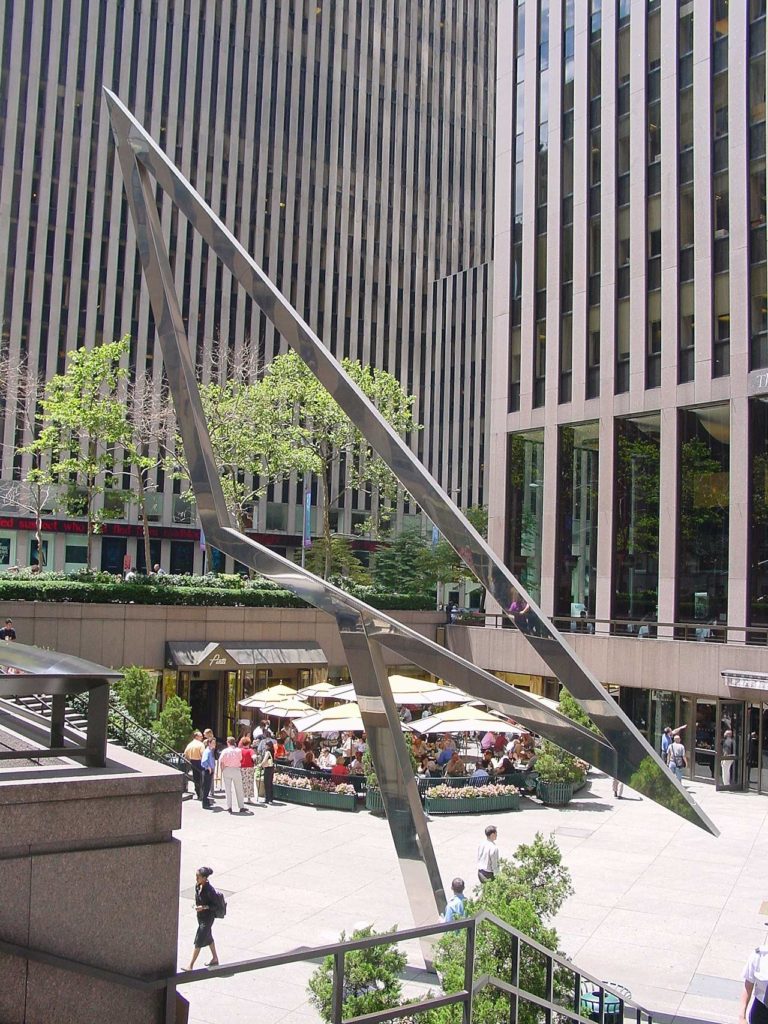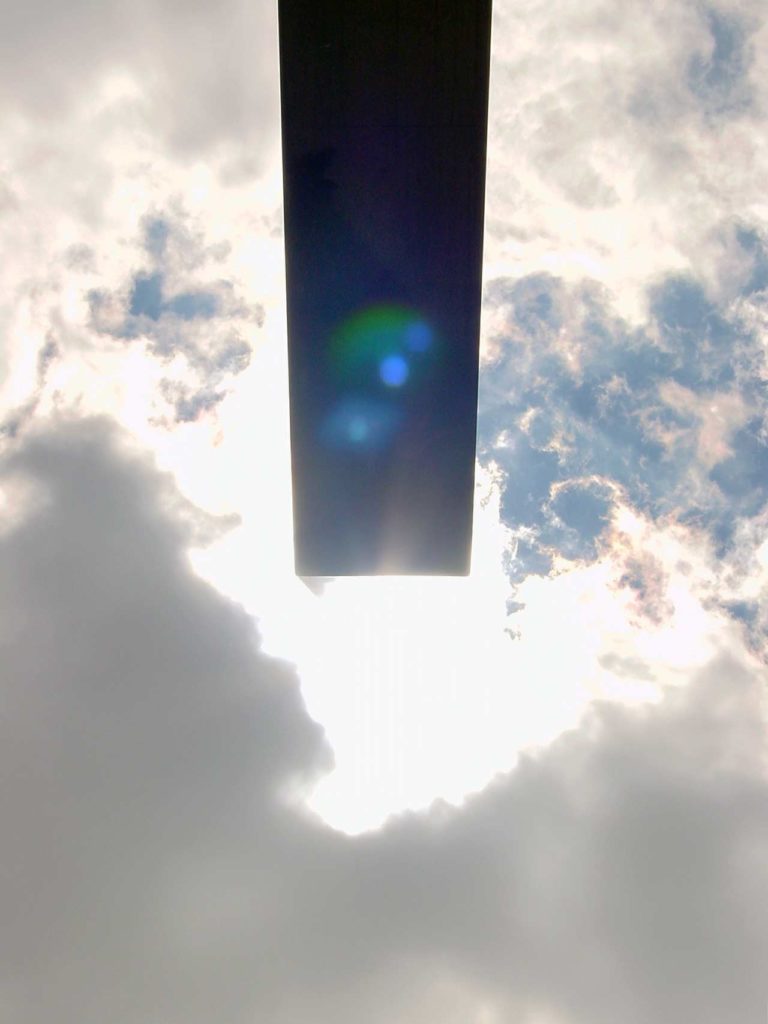Sun Triangle
McGraw-Hill Building Plaza
Sixth Avenue between 48th and 49th Streets
Manhattan
Natural History special issue
Part of City of Stars photo essay.

People eat, sleep, talk, and walk in this plaza, unaware of the triangle’s Stonehengian significance. For many visitors, Sun Triangle, by oceanographer, inventor, and sculptor Athelstan Spilhaus, is just another oversize, odd-looking modern sculpture parked in front of a modern building. At local noon (1:00 p.m. Daylight Time) on June 21, the summer solstice, the Sun reaches and altitude of 73° in the sky and its rays align exactly with the short, steep side of the triangle (pictured below).

In winter, the Sun’s path across the sky stays low. Its rays align exactly with the lower side of the triangle at noon on the winter solstice (December 21), when the Sun ascends no higher than 23° in the sky. At noon on the spring and autumn equinoxes (March 21 and September 21) the Sun’s elevation is intermediate, aligning exactly with the third (upper) leg of the triangle.
No side of the triangle is vertical—for good reason. At no time of day and on no day of the year is the Sun directly overhead in New York City. Indeed, the Sun is never directly overhead anywhere in the continental United States. Yet if you ask people in the street, “Where is the Sun at noon?” more than half will point straight up. If you catch people in this display of ignorance, please point them to this triangle.

